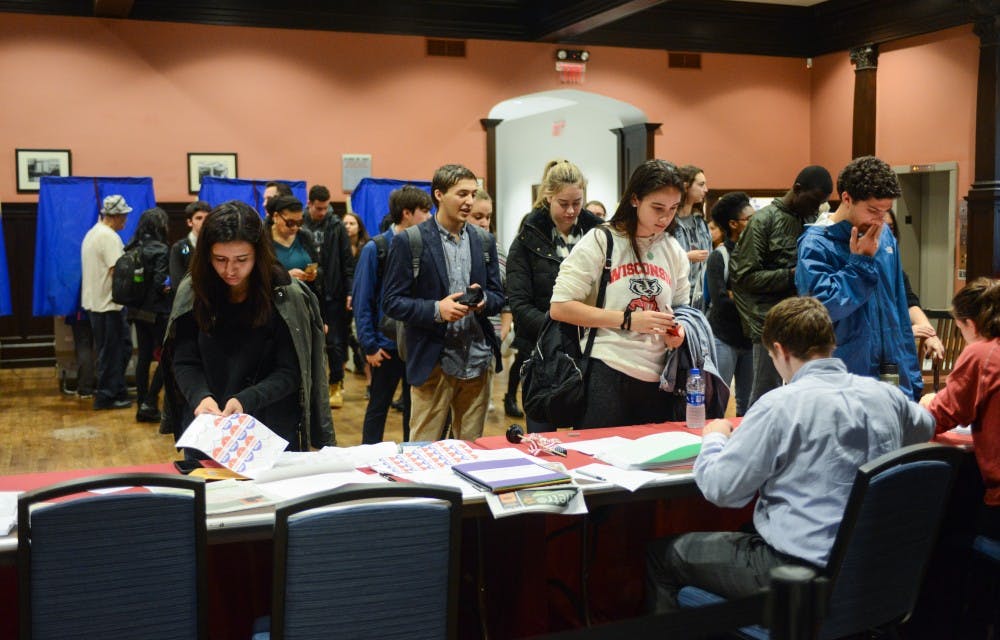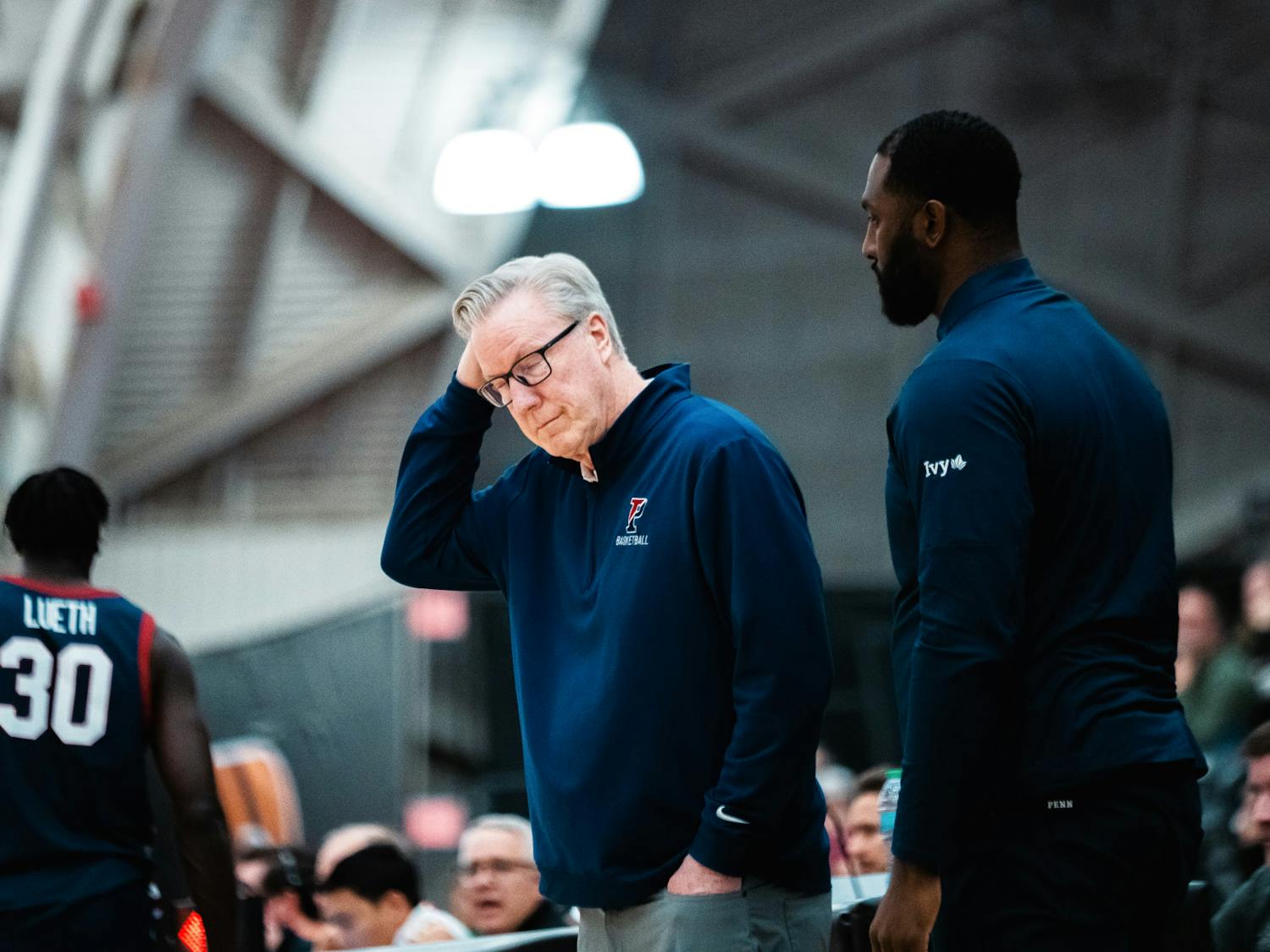Penn students made their voices heard at the ballot boxes last Tuesday in the midterm elections. According to numbers collected by Penn's Office of Government and Community Affairs, over 3,300 people voted at Penn’s eight on-campus polling stations, more than tripling those who voted in the 2014 midterms and almost doubling those who voted in the 2010 midterms.
According to numbers provided by Netter Center Associate Director Cory Bowman, 3,397 votes were cast across Penn’s campus stations, increasing drastically from the 1,784 votes in 2010 and the 980 votes in 2014.
Bowman clarified that these initial numbers come with caveats, such as the increase in Penn's enrollment in the past eight years.
In 2010-11, Penn's undergraduate enrollment was 9,865, and in fall 2017 it was 10,496. Bowman said although this growth added a couple hundred new Penn voters, 2018's overall turnout trend was clear: Penn saw “very, very substantial increases in on-campus voting."
Still, however, voter experts and Penn professors stressed it is still too early to determine the full effect Penn students had in the elections and that the uptick in on-campus voter turnout likely had little concrete effect on Pennsylvania election outcomes.
Political Science professor Marc Meredith, who specializes in voter turnout, said although student voters may have increased on campus, they did not play a decisive role in Pennsylvania’s key races. Pennsylvania Democratic incumbents Bob Casey (D) and Governor Tom Wolf (D) easily won re-election in the state, with each candidate beating their Republican challenger by over 12 percentage points.
While Quakers may not have provided the tipping point for the Democratic successes, Meredith said they nevertheless contributed to the victories.
“Given the general trend we see in data, that younger voters are more likely to support Democratic candidates than older voters, the youth vote was probably part of the broad coalition that propelled Wolf and Casey to victory,” Meredith said.
Related Links
After record-breaking female midterm victories, Penn holds panel on 'watershed moment'
He cautioned that any current discussion of turnout is “a little bit early,” instructing observers to refrain from drawing too many conclusions based on the first set of data.
Bowman agreed and said he would wait for the release of figures from Tufts University's National Study of Voting, Learning, and Engagement to formally analyze election results.
Students and faculty involved with the University-funded, student-run organization Penn Leads the Vote said the increases were encouraging, pointing to its own larger on-campus presence and voter outreach programs as catalysts for the high numbers.
Eva Gonzalez is a PLTV fellow and College freshman who helped coordinate the organization’s voter captain initiative and College House competition programs. Like Meredith and Bowman, she also was cautious about discussing PLTV’s impact in strict numerical terms. More broadly, though, she said PLTV laid an important foundation.
“I think looking at it overall, we definitely created a successful infrastructure with different programs and coalitions to create a better environment where people feel encouraged to vote,” Gonzalez said. “It’s bigger than just this one election — PLTV was able to create a foundation for a more civically-engaged campus that we will be able to continue for years to come.”
Meredith said research does show that PLTV's strategies were effective.
“Part of what I teach in Introduction to American Politics is that part of what you want to do with increasing turnout is to make voting more social,” Meredith said. “These [PLTV] strategies seem very consistent with making voting more social, such as having people you know from your student group mobilize you to vote, and the competition aspect certainly increases social pressure.”
Looking forward to the 2020 presidential elections, Gonzalez said she saw an opportunity for youth voters to further increase their growing turnout rates, as well as to make Penn students more civically engaged outside of election years.
With the increased turnout this year, Meredith said those who cast their first ballots last Tuesday are more likely to develop a habit and vote again in 2020, when Pennsylvania will be a key swing state.
“In part because of the sense that the Pennsylvania elections weren't that close this time, we didn’t have as much mobilization in the state as we will in 2020,” Meredith said. “For a lot of these people who did vote for the first time in this election, our political science research suggests that it will be more likely they will vote in 2020.”









